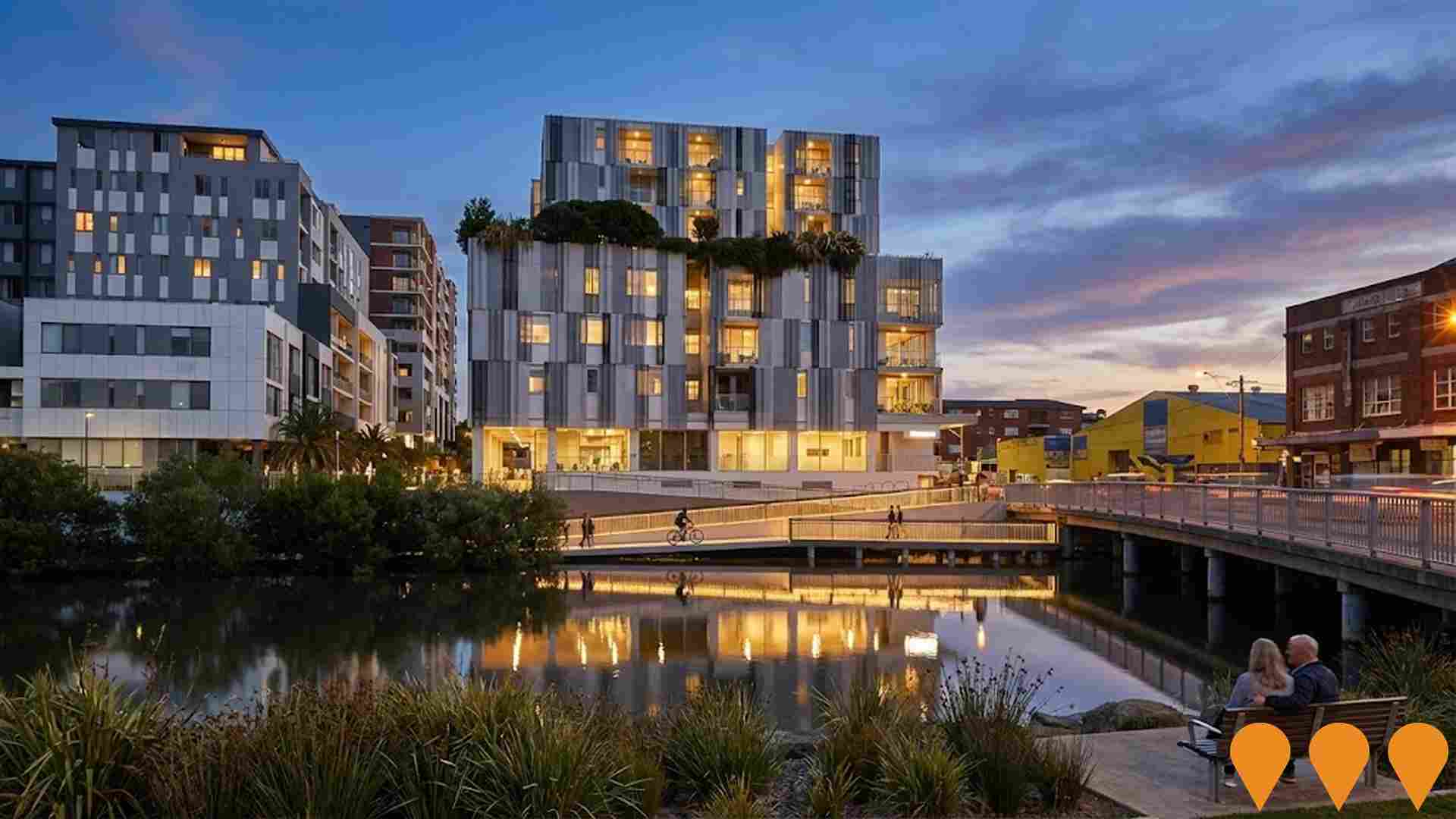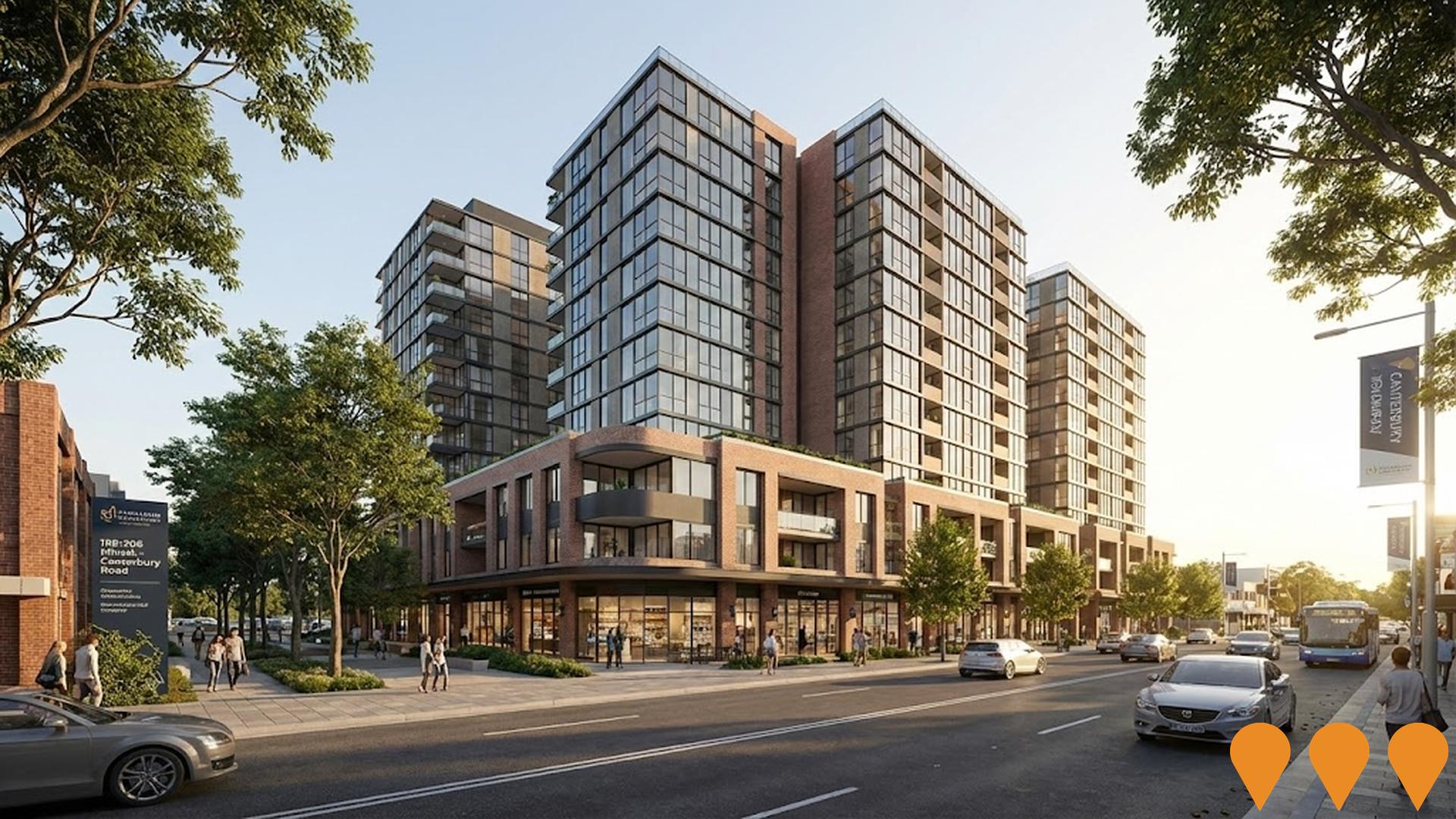Chart Color Schemes
est. as @ -- *
ABS ERP | -- people | --
2021 Census | -- people
Sales Activity
Curious about local property values? Filter the chart to assess the volume and appreciation (including resales) trends and regional comparisons, or scroll to the map below view this information at an individual property level.
Find a Recent Sale
Sales Detail
Population
Canterbury (North) - Ashbury lies within the top quartile of areas nationally for population growth performance according to AreaSearch analysis of recent, and medium to long-term trends
Canterbury (North) - Ashbury's population was around 12,689 as of November 2025. This figure reflects an increase of 690 people since the 2021 Census, which recorded a population of 11,999. The change is inferred from ABS estimates showing an estimated resident population of 12,497 in June 2024 and an additional 135 validated new addresses since the Census date. This results in a population density ratio of 4,187 persons per square kilometer, placing it in the top 10% of national locations assessed by AreaSearch. Over the past decade, Canterbury (North) - Ashbury has shown resilient growth patterns with a compound annual growth rate of 1.8%, outperforming its SA3 area. Overseas migration contributed approximately 75.7% of overall population gains during recent periods.
AreaSearch is adopting ABS/Geoscience Australia projections for each SA2 area, released in 2024 with 2022 as the base year. For areas not covered by this data, AreaSearch utilises NSW State Government's SA2 level projections, released in 2022 with 2021 as the base year. Growth rates by age group from these aggregations are applied to all areas for years 2032 to 2041. Future population trends suggest a growth just below the national median, with an expected increase of 1,028 persons to 2041 based on latest population numbers, reflecting a total increase of 6.6% over the 17-year period.
Frequently Asked Questions - Population
Development
Residential development activity is lower than average in Canterbury (North) - Ashbury according to AreaSearch's national comparison of local real estate markets
Canterbury North - Ashbury averaged approximately 33 dwelling approvals annually. Between FY21 and FY25166 homes were approved, with none yet in FY26. Each dwelling built over these years gained an average of 2.4 new residents.
The average construction cost for new dwellings was $494,000, indicating a focus on premium developments. This financial year has seen $8.2 million in commercial development approvals. Compared to Greater Sydney and nationally, Canterbury North - Ashbury shows lower construction activity per capita, ranking at the 7th percentile nationally. Recent construction comprises 10% detached houses and 90% townhouses or apartments, a shift from the current 46% houses, suggesting limited developable land and evolving housing preferences. With around 3303 people per dwelling approval, it reflects a mature market. By 2041, the area is projected to grow by 836 residents.
At current development rates, new housing supply should meet demand comfortably.
Frequently Asked Questions - Development
Infrastructure
Canterbury (North) - Ashbury has very high levels of nearby infrastructure activity, ranking in the top 10% nationally
Changes in local infrastructure significantly affect an area's performance. AreaSearch has identified 36 projects that could impact the area. Notable ones include Canterbury Local Centre Redevelopment, Canterbury Town Centre Upgrade, Sydney Metro City & Southwest, and Earlwood Town Centre Speed Limit Reduction. The following list details those likely to be most relevant.
Professional plan users can use the search below to filter and access additional projects.
INFRASTRUCTURE SEARCH
 Denotes AI-based impression for illustrative purposes only, not to be taken as definitive under any circumstances. Please follow links and conduct other investigations from the project's source for actual imagery. Developers and project owners wishing us to use original imagery please Contact Us and we will do so.
Denotes AI-based impression for illustrative purposes only, not to be taken as definitive under any circumstances. Please follow links and conduct other investigations from the project's source for actual imagery. Developers and project owners wishing us to use original imagery please Contact Us and we will do so.
Frequently Asked Questions - Infrastructure
Sydney Metro City & Southwest
30km metro rail extension from Chatswood to Bankstown via the Sydney CBD, including 15.5km of new twin tunnels under Sydney Harbour and the CBD and the upgrade of the existing T3 Bankstown Line to metro standards. The Chatswood to Sydenham section (including new stations at Crows Nest, Victoria Cross, Barangaroo, Martin Place, Pitt Street, Waterloo and upgrade of Central) opened on 19 August 2024. The final Sydenham to Bankstown section is now under construction and scheduled to open in 2026 following resolution of industrial disputes. Features driverless trains, platform screen doors and full accessibility. Total project cost approximately A$21.6 billion (2024 figures).
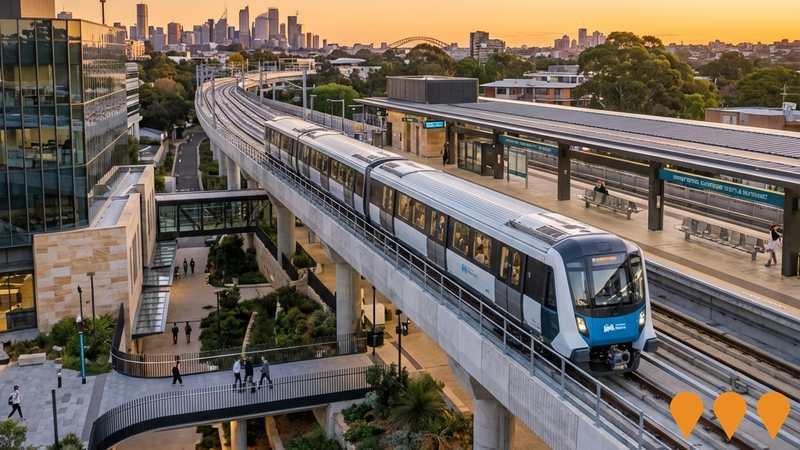
Campsie Private Hospital
A $150 million, 218-bed private hospital development (11 storeys) delivering inpatient and outpatient services, emergency department, intensive care, maternity, day surgery, cardiac catheterisation labs, dialysis and oncology services. The project will create approximately 400 construction jobs and over 1,100 ongoing operational jobs, significantly increasing acute healthcare capacity in the Canterbury-Bankstown region.

Sydney Metro Sydenham to Bankstown Conversion
Conversion of the existing T3 Bankstown Line (between Sydenham and Bankstown) to modern, high-tech metro standards as part of the Sydney Metro City & Southwest project. The upgrade includes new air-conditioned metro trains running every 4 minutes in peak (15 trains per hour), platform screen doors, new lifts for full accessibility, level access between platforms and trains, and new concourses. Dulwich Hill Station is one of the ten stations being upgraded. The full closure of the line for final conversion works began in September 2024.
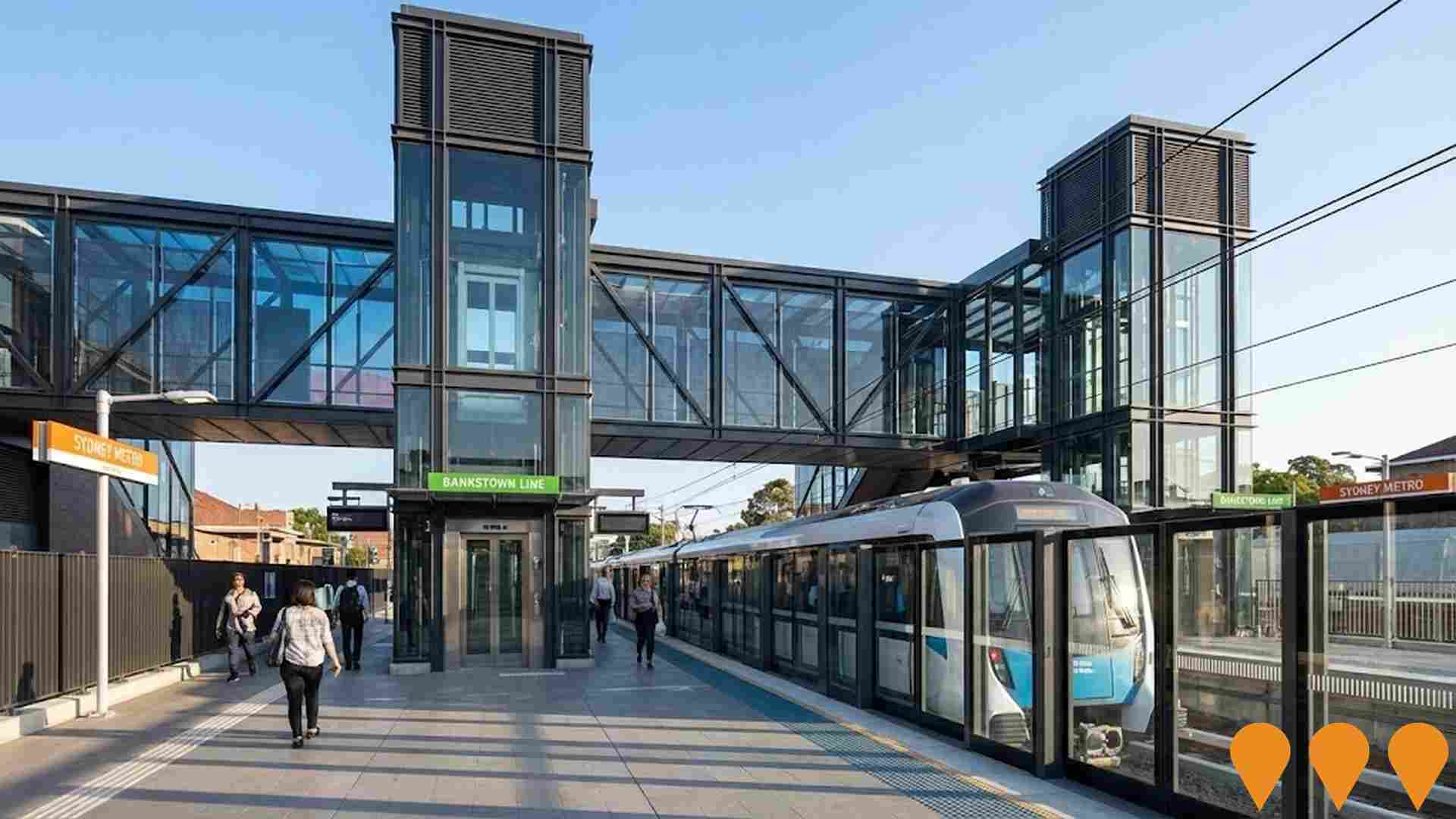
Inner West Housing Investigation Areas
Council-led comprehensive housing strategy (Our Fairer Future Plan) focusing on Housing Investigation Areas around transport nodes including Ashfield, Croydon, Dulwich Hill, Lewisham, Marrickville and others. Includes masterplans for increased density, new parks, plazas, multi-purpose libraries, walking/cycling paths, improved public domain and transport connections. Part of Inner West Council's alternative to NSW Government TOD reforms.

Cooks to Cove GreenWay
The Cooks to Cove GreenWay is an environmental, cultural, and sustainable transport corridor in Sydney's Inner West, linking the Cooks River at Earlwood with the Parramatta River at Iron Cove. It features a 5.8km shared path for walking and cycling, foreshore walks, cultural and historical sites, cafes, bushcare sites, parks, playgrounds, sporting facilities, and ecological restoration along waterways.
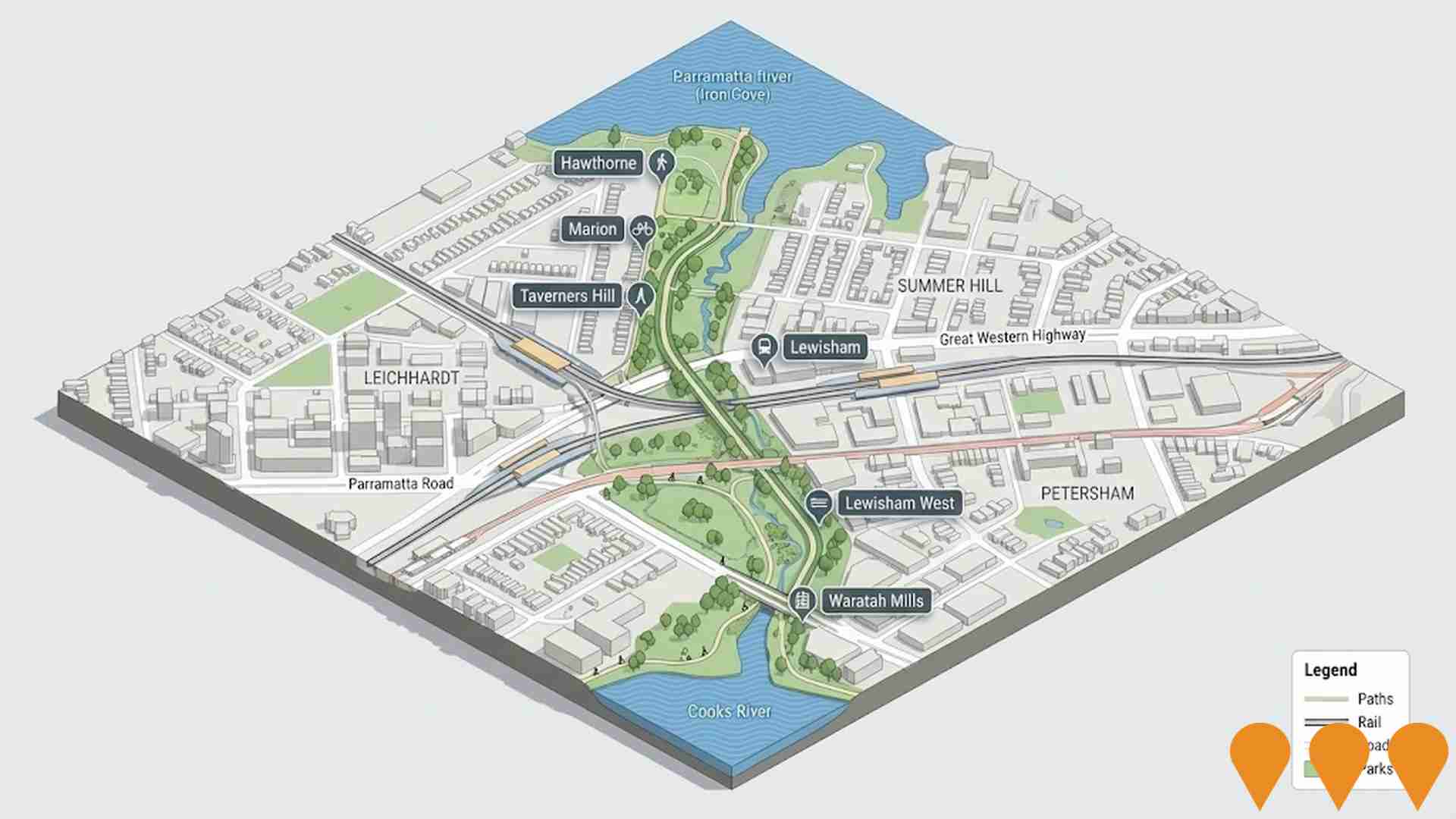
Cardinal Freeman Final Release Development - Wattle Building
The final stage of development at Cardinal Freeman retirement village, featuring the new Wattle building with 41 contemporary independent living apartments. This represents the last opportunity to secure brand-new apartments in this highly sought-after Inner West retirement community. Construction began April 2025 following demolition of the original Building One, with sales launching November 2025 and move-in Spring 2026.

Canterbury Leisure & Aquatic Centre
Redevelopment of the 1960s Canterbury Aquatic Centre at Tasker Park into a modern community leisure and aquatic centre. Features include a 50m outdoor heated pool with bleacher seating, 25m indoor heated pool, 20m warm water program/therapy pool with accessible spa, zero-depth children's splash park and water play area, fully equipped gym with two group fitness rooms, allied health suites, sauna, cafe, accessible change facilities including Changing Places facilities, common lawn, and improved connections to surrounding open space. Delivered by Lipman (head contractor) with Williams Ross Architects for Canterbury-Bankstown Council. Construction progressing with piling and major concrete works complete; completion scheduled for late 2026. Project includes expanded car parking and focuses on accessibility and inclusion with easily navigable circulation spaces.

Canterbury Local Centre Redevelopment
The Canterbury-Bankstown Council is advancing the Canterbury Local Centre Redevelopment, focusing on revitalizing the precinct with updated development controls. The project includes mixed-use developments, improved public spaces, and enhanced transport connectivity. Draft controls were resolved for preparation and exhibition in October 2024, with community consultation ongoing.
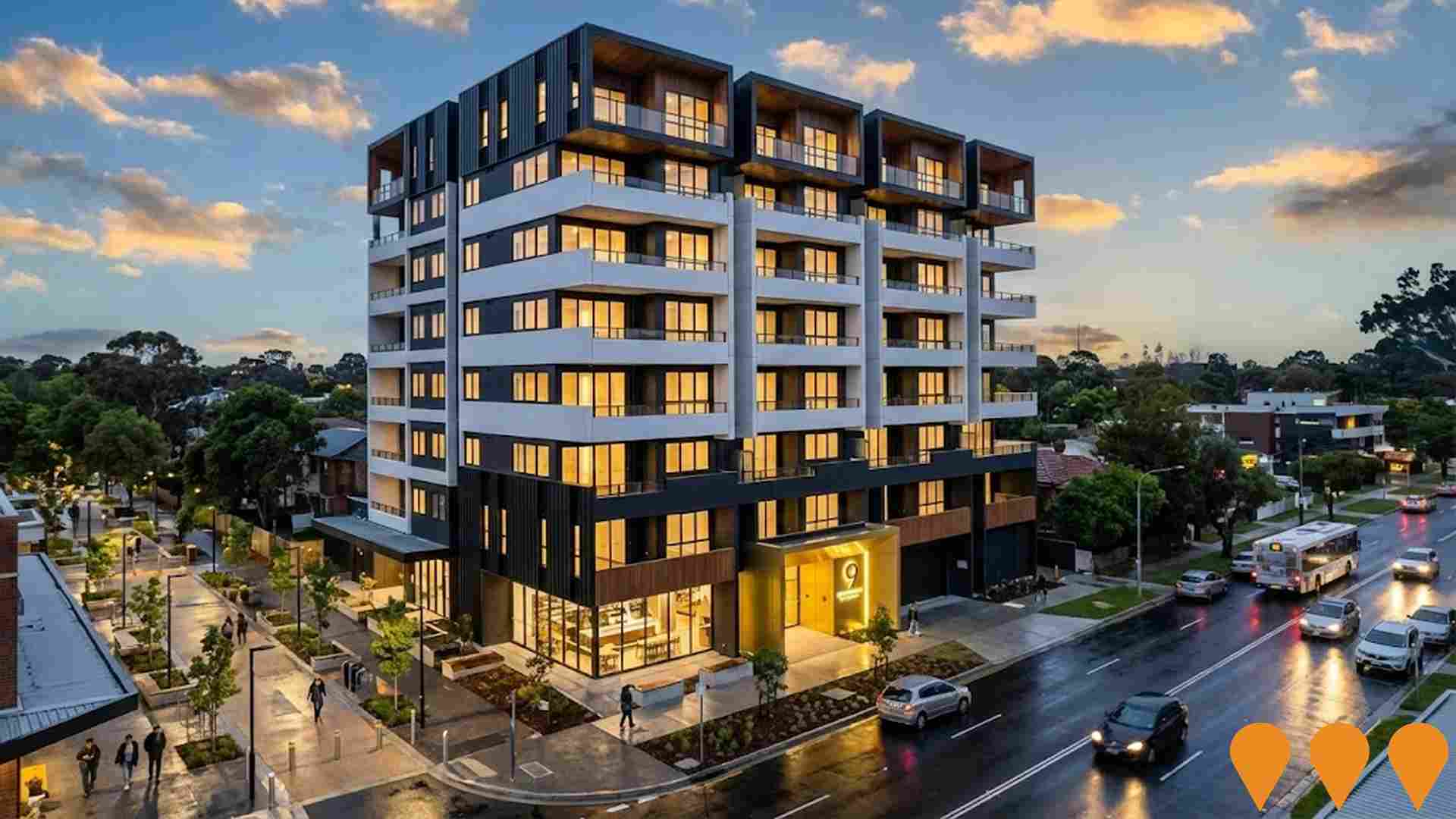
Employment
The labour market in Canterbury (North) - Ashbury demonstrates typical performance when compared to similar areas across Australia
Canterbury (North) - Ashbury has a highly educated workforce with significant representation in the technology sector. Its unemployment rate was 4.2% as of June 2025.
The area experienced an estimated employment growth of 3.7% over the past year. In June 2025, 7,134 residents were employed, and the unemployment rate matched Greater Sydney's at 4.2%. Workforce participation was broadly similar to Greater Sydney's 60.0%. The dominant employment sectors among residents include health care & social assistance, professional & technical, and education & training.
Education & training has a particularly high representation, at 1.3 times the regional level. Conversely, construction shows lower representation at 6.6% compared to the regional average of 8.6%. Limited local employment opportunities are indicated by the Census working population count versus resident population. Over the year ending June 2025, employment increased by 3.7%, while labour force grew by 4.3%, raising the unemployment rate by 0.5 percentage points. In contrast, Greater Sydney experienced employment growth of 2.6% and labour force growth of 2.9%, with a 0.3 percentage point rise in unemployment. Jobs and Skills Australia's national employment forecasts from May 2025 suggest that over five years, national employment is expected to expand by 6.6%. Over ten years, this expansion is projected at 13.7%. Applying these projections to Canterbury (North) - Ashbury's employment mix indicates potential local growth of approximately 7.0% over five years and 14.2% over ten years.
Frequently Asked Questions - Employment
Income
Income analysis reveals strong economic positioning, with the area outperforming 60% of locations assessed nationally by AreaSearch
AreaSearch's latest postcode level ATO data for financial year 2022 shows that income in Canterbury (North) - Ashbury is higher than average nationally. The median assessed income is $54,084 and the average income stands at $70,657. This contrasts with Greater Sydney's figures of a median income of $56,994 and an average income of $80,856. Based on Wage Price Index growth of 12.61% since financial year 2022, current estimates would be approximately $60,904 (median) and $79,567 (average) as of September 2025. According to the 2021 Census figures, household, family and personal incomes in Canterbury (North) - Ashbury cluster around the 71st percentile nationally. Income brackets indicate that the predominant cohort spans 32.9% of locals (4,174 people) in the $1,500 - 2,999 category, aligning with the region where this cohort likewise represents 30.9%. A significant 31.5% earn above $3,000 weekly. High housing costs consume 16.9% of income, though strong earnings still place disposable income at the 70th percentile and the area's SEIFA income ranking places it in the 8th decile.
Frequently Asked Questions - Income
Housing
Canterbury (North) - Ashbury features a more urban dwelling mix with significant apartment living, with above-average rates of outright home ownership
In Canterbury (North) - Ashbury, houses accounted for 46.3% of dwellings, with the remaining 53.6% being semi-detached homes, apartments, and other types of dwellings. In comparison, Sydney metro had 33.5% houses and 66.5% other dwellings as of the latest Census. Home ownership in Canterbury (North) - Ashbury stood at 31.4%, with mortgaged dwellings at 31.8% and rented ones at 36.8%. The median monthly mortgage repayment was $2,400, below Sydney metro's average of $2,436. The median weekly rent in the area was $480, compared to Sydney metro's $465. Nationally, Canterbury (North) - Ashbury's mortgage repayments were significantly higher than the Australian average of $1,863, while rents were substantially above the national figure of $375.
Frequently Asked Questions - Housing
Household Composition
Canterbury (North) - Ashbury features high concentrations of group households, with a fairly typical median household size
Family households constitute 71.3% of all households, including couples with children (32.0%), couples without children (27.2%), and single parent families (10.5%). Non-family households account for the remaining 28.7%, with lone person households at 23.1% and group households comprising 5.6%. The median household size is 2.5 people, which aligns with the Greater Sydney average.
Frequently Asked Questions - Households
Local Schools & Education
The educational profile of Canterbury (North) - Ashbury exceeds national averages, with above-average qualification levels and academic performance metrics
Canterbury (North) - Ashbury has educational attainment that exceeds broader benchmarks. 43.6% of its residents aged 15 and above hold university qualifications, compared to 30.4% in Australia and 32.2% in New South Wales (NSW). This gives the area a significant educational advantage. Bachelor degrees are the most common at 28.2%, followed by postgraduate qualifications at 12.1% and graduate diplomas at 3.3%.
Vocational pathways account for 24.4% of qualifications among those aged 15 and above, with advanced diplomas at 11.0% and certificates at 13.4%. Educational participation is high, with 29.1% of residents currently enrolled in formal education. This includes 7.8% in primary education, 7.2% in tertiary education, and 6.6% pursuing secondary education. The area has 4 schools with a combined enrollment of 1,456 students. It demonstrates typical Australian school conditions (ICSEA: 1022) with balanced educational opportunities. School places per 100 residents are 11.5, which is below the regional average of 15.9, suggesting some students may attend schools in adjacent areas. Educational provision follows conventional lines, split between 2 primary and 2 secondary institutions.
Frequently Asked Questions - Education
Schools Detail
Nearby Services & Amenities
Transport
Transport servicing is high compared to other areas nationally based on assessment of service frequency, route connectivity and accessibility
Canterbury (North) - Ashbury has 56 active public transport stops. These are all bus stops serviced by 34 different routes. Together, these routes provide 6,718 weekly passenger trips.
The accessibility of transport is rated as excellent with residents typically located 148 meters from the nearest stop. On average, there are 959 trips per day across all routes, which equates to approximately 119 weekly trips per individual stop.
Frequently Asked Questions - Transport
Transport Stops Detail
Health
Canterbury (North) - Ashbury's residents boast exceedingly positive health performance metrics with very low prevalence of common health conditions across all age groups
Canterbury (North) - Ashbury has excellent health outcomes, with a very low prevalence of common health conditions across all age groups. Private health cover is high at approximately 55%, or about 6,978 people, compared to 57.3% in Greater Sydney.
Mental health issues and arthritis are the most common conditions, affecting 6.8% and 6.1% of residents respectively. 74.9% of residents report no medical ailments, compared to 77.0% in Greater Sydney. The area has a higher proportion of seniors aged 65 and over at 16.0%, or 2,030 people, compared to 14.5% in Greater Sydney. Despite this, health outcomes among seniors are strong, similar to the general population's health profile.
Frequently Asked Questions - Health
Cultural Diversity
Canterbury (North) - Ashbury is among the most culturally diverse areas in the country based on AreaSearch assessment of a range of language and cultural background related metrics
Canterbury (North) - Ashbury has a high level of cultural diversity, with 43.7% of its population born overseas and 45.1% speaking a language other than English at home. Christianity is the predominant religion in Canterbury (North) - Ashbury, accounting for 49.7% of the population. However, Buddhism is particularly prominent, making up 5.6% of the population compared to 6.2% across Greater Sydney.
The top three ancestry groups in Canterbury (North) - Ashbury are Other at 17.1%, Australian at 14.9%, and English at 14.5%. Notably, Greek, Lebanese, and Spanish ethnicities are overrepresented in Canterbury (North) - Ashbury compared to the regional averages, with Greeks comprising 6.4% of the population versus 2.9%, Lebanese at 3.7% versus 3.1%, and Spanish at 0.9% versus 0.7%.
Frequently Asked Questions - Diversity
Age
Canterbury (North) - Ashbury's population is slightly younger than the national pattern
Canterbury (North) - Ashbury has a median age of 37, matching Greater Sydney's figure and remaining close to Australia's median age of 38 years. The age group of 25-34 is strongly represented at 18.1%, higher than Greater Sydney's proportion, while the 5-14 cohort is less prevalent at 8.7%. Between 2021 and present, the 15 to 24 age group has increased from 11.1% to 12.0% of the population. Conversely, the 5 to 14 cohort has decreased from 10.1% to 8.7%. By 2041, demographic projections indicate significant changes in Canterbury (North) - Ashbury's age structure. The 85+ group is projected to grow by 101%, reaching 631 people from the current 314, indicating a substantial increase in this age bracket. The aging population trend is evident, with those aged 65 and above comprising 68% of the projected growth. In contrast, the 0 to 4 and 15 to 24 age groups are expected to experience population declines.
